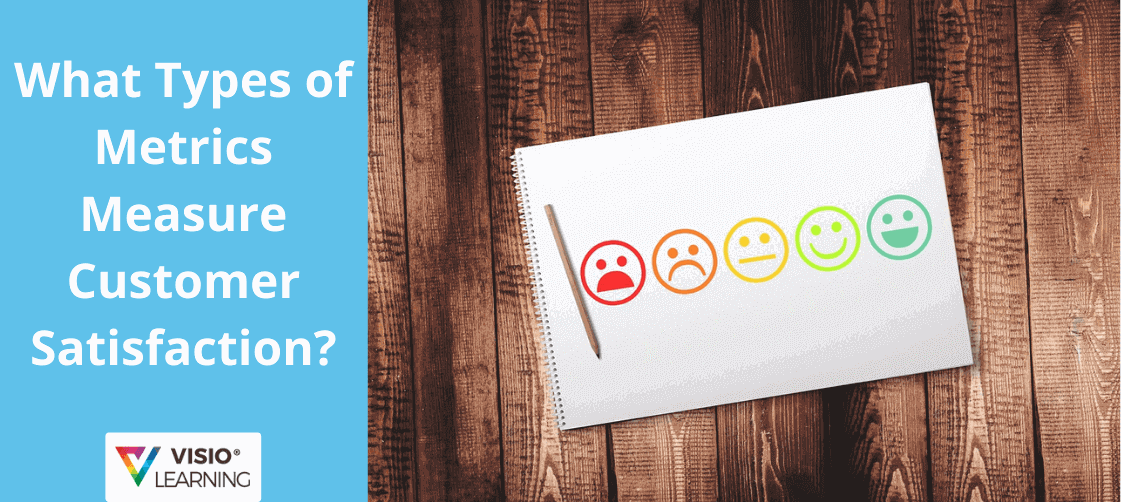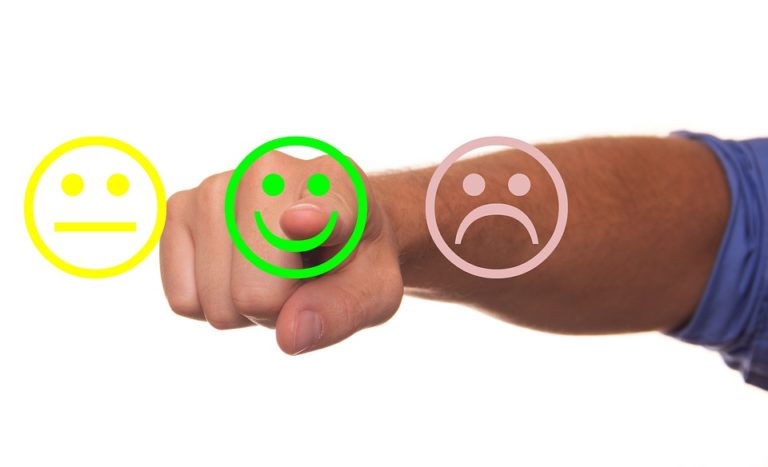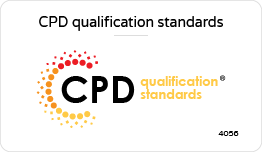
All I want is a number!’ Sounds like a familiar complaint? Most of us are familiar with the frustrations of not having a clear number or picture. And while dealing with customer satisfaction, the need for concrete numbers goes even higher. But before measuring customer satisfaction, it’s essential to learn how to do it. This is why knowing what types of metrics measure customer satisfaction is vital.
Irrespective of your business or job type – knowing your customer’s satisfaction level is likely to be of pivotal importance to you.
Like everything else, having specific numbers on customer satisfaction levels helps. It makes the math in your job easy and doable. And this is where knowing what types of metrics measure customer satisfaction gains relevance.
Keep scrolling to learn the basics of Customer Satisfaction metrics in one go. You will get to know the concepts of the highest used metrics of customer satisfaction. Calculation techniques and correct uses of these metrics will get emphasis. And tips and strategies on customer satisfaction and retention will be covered as well.
Why is Measuring Customer Satisfaction So Important?
Business models are not always straightforward. In fact, sometimes they can be overwhelming and complicated. So knowing your numbers can really help cut the overwhelming feeling. Otherwise, things can go from manageable in one minute to unmanageable in the next.
Who doesn’t worry about keeping his business afloat? And it’s barely a secret that the way to do that is to retain customers. Just try increasing your customer retention by 5%. The results will likely surprise you. Bain and Company and Harvard business school (HBS) did a study on this. According to them, this has a chance of increasing your profits by 25% to even 90%! You can learn more about this from here.
Customer retention is much easier than customer acquisition. Moreover, do you know where the biggest slice of your revenue pie is likely to come from? You guessed it right! It’s from your repeat customers and not the new ones.
While learning about what types of metrics measure customer satisfaction, it’s essential to understand one thing. Customer Satisfaction and retention have both- qualitative and quantitative aspects. The quantitative metrics will help you understand certain things. For example, the percentage of customers that are leaving, the satisfied group, etc.
Similarly, qualitative metrics help us understand certain other things. Such as what particular aspects of your service to work on. So while learning about what types of metrics measure customer satisfaction – balance both sides. That will yield better results.
What Types Of Metrics Measure Customer Satisfaction?
Gauging Customer Satisfaction is a tricky business. Numbers and qualitative attributes both need addressing here. So integrate between different ways of measuring Customer Satisfaction. That is the key to getting an accurate picture of how satisfied your customers are.
- Interactions
- Perceptions
- Attitudes
- Behaviours
For qualitative analysis- some common platforms are more helpful. For example, observing and analysing reviews and ratings, social media interactions, etc. Moreover, being innovative and intuitive about addressing these can give you valuable insights. They can be instrumental to understanding the mind of your customers in general.
Let’s now talk about some of the popular choices regarding what types of metrics measure customer satisfaction–
- CSAT (Customer Satisfaction Score)
- NPS (Net Promoter score)
- CES (Customer Effort Score)
- CCR (Customer Churn Rate)
- CHS (Customer Health Score)
- Customer reviews and ratings
- Social media
CSAT (Customer Satisfaction Score)
What is CSAT?
While learning what types of metrics measure customer satisfaction, you will likely learn about CSAT or Customer Satisfaction Score first. CSAT readings help in understanding the overall happiness of customers with your service or product. numbers, percentages, or even smiley faces are usually used in the reports.
CSAT Calculation Process:
Customers usually receive a form where there are one or more scales. The scales have the numbers 1 to another fixed number, typically 5 or 10 marked on them. Generally, One means low, and the higher range means an increased degree of satisfaction. The customers then hit the number that reflects their satisfaction level.
This same form can sometimes come with smiley faces. Customers choose between options shown by smiley faces. The visuals range from very happy to very disappointed. These results can also appear in percentages.
Then the total score is divided by the number of customers who took the survey. That gives a rough estimate of how satisfied customers are.
Using emoticons has lately been getting more votes of effectiveness. After all, they are much more intuitive and easy to respond to on the customers’ ends.
What Insights to Draw From CSAT Data –
CSAT scores are good for getting an image of how happy your customers are at a glance. Scoring higher on the scale will mean that your customers don’t have much to complain about and vice versa. Are your CSAT scores residing somewhat in the middle? It means that a few tweaks here and there will likely get the job done for getting more satisfied customers.
Interestingly enough, how well customers rank is related to how well employees serve. And how well employees serve depends on employee satisfaction levels. So CSAT, in a passive way, gives ideas about employee satisfaction besides that of customers too.
NPS (Net Promoter Score)

What is NPS?
Net Promoter Score is a metric that shows how your customers talk about your business. In other words, how likely they are to speak positively or negatively about your business.
NPS Calculation Process:
For understanding the NPS calculation process, you’d need to learn the concept of three different types of customers. We know the first group as the Detractors. The second group is called the Passives. And the last and the crucial ones under this context are the Promoters.
Detractors, in general, speak negatively of your business. Thus, they make your company goodwill plunge low. Passives comprise the group of satisfied customers who don’t engage much in your venture. Promoters are the ones who are happy and have developed a sense of loyalty over time. They add to your company’s goodwill by spreading positive word of mouth. And thus, they directly contribute to the growth of your business.
For knowing your number of promoters and detractors, you will need your customers to fill out a survey form. They will choose a number on a scale of 1 to any set number (commonly assigned as 5 or 10). A higher degree denotes how likely they are to refer your product/service to someone else. High scorers (around the 7-10 range) are thus your promoters, and low scorers are the detractors.
Next, take the number of promoters and the number of detractors. Subtract the percentage of detractors from the percentage of promoters. And the remaining portion of customers is your resultant NPS score.
CES (Customer Effort Score)
What is CES?
The Customer effort score or CES takes into account the amount of effort that the customer had to put during the purchasing process. Higher effort means low satisfaction and vice versa, thus scoring low on this metric is the desirable goal.
CES Calculation Process:
The customers mark their ratings on a numeric scale of 1 to any set standard number (5 or 10 are common). 1 means low effort and the higher range means high effort was needed while availing the said product or service.
A high CES rating suggests the need for improvement in customer experience. A lower rating suggests that the current customer experience is at par with the standards.
What Insights to Draw from CES Data-
CES data focuses on some interesting pointers that the other metrics don’t. Studies show that customers giving high CES ratings have a much lower rate of returning. So high CES scores (indicating high levels of effort during the buying process) are red flags to be taken seriously.
CES also presents the opportunity to find out the common areas where your customers are facing difficulties. Focusing on improving those areas means disappointing a much lower number of customers.
Pros and Cons of CES Data-
The good things about CES data are that
– they are very helpful in figuring out the problem areas of current customer service
– they identify customers who are prone to leaving. That provides an opportunity to prevent such deflections.
The limitations of CES data include the subjectivity of the customers’ opinions. Studies also show that customers are more likely to give neutral responses to such surveys. Reservations towards making negative statements thus result in low authenticity of CES data.
CCR (Customer Churn Rate)

What is CCR?
Customer churn rate or CCR is a count of the customers’ percentage who has left your business over a given time period.
CCR Calculation Process:
For calculating CCR, a time period needs to be set first. The difference between the number of users at the beginning and the end of this period is calculated. That result, when divided by the initial number of customers, gives the churn rate.
How CCR Data can be Helpful-
A high CCR score directly calls out for action. This shows an urgent need to identify and solve problems that are causing poor customer retention. Potential interventions include improvements in services. Such as the tone in messages and emails, the behaviour of sales executives, etc.
CHS (Customer Health Score)

What is CHS?
CHS or Customer Health Score is one of the qualitative metrics for measuring customer satisfaction. It indicates how likely clients are likely to stay or leave. But the analysis isn’t done using traditional surveys. Instead, it is carried out depending on extensive observations.
CHS Calculation Process:
CHS is a qualitative method; hence surveys aren’t the tools used here. CHS is measured on the basis of asking questions like how long a client has been buying from you. How many of them sign up for premium options? Are your customers responding well when you are diversifying your product offerings? CHS studies are done over long and varying periods of time.
The quality or health of your customers’ relationship with you is looked at under this metric. But the qualitative approach should be followed by categorisations of your customers into groups. The groups should indicate how healthy, vulnerable or poor their relationship with your business is.
So as you can see, while learning what types of metrics measure customer satisfaction, the methods that you learn about can vary widely.
Customer Reviews and Ratings:

The metrics mentioned above indeed provide valuable data, but they are rarely intuitive. Trying to figure out what types of metrics measure customer satisfaction intuitively? Take a closer look at your Customer reviews.
Customer reviews are an excellent counterpart to that. Questionnaire forms miss out on a lot while trying to understand where the problems lie. But customer reviews can come with vivid details and descriptions of the customer’s journey.
Reviews and ratings can also serve as fantastic promotional tools if they turn out well. Seeing four to five stars out of five on average is always likely to be convincing to your target audience. And votes of excitement from the ends of other fellow buyers rarely fail to engage the audience.
Ensure that your customers have the scope to rate and review your product or service. For using them as good promotional tools, paying attention to quality is the key.
Social Media

Can you tell me a great way to see the image that you are building for your company? If you said Social media, that’s the correct answer. The way your customers interact with your business presence on social media says a lot.
That includes how they are commenting on your page, their levels of engagement, enthusiasm in responding to your events, etc. Everything builds up to create a message of how satisfied they are as customers.
Here are the factors that affect customer opinions in brief-
- Prompt responses in chat boxes
- Expressing ample willingness to serve the customers
- Knowing and providing relevant information
- Delivery speed
- Behaviour and empathy, etc.
Taking social media insights into account will give you valuable views. They explain the experiential aspects of your customer satisfaction. And numeric reports will often fall short on that.
Do The Findings From Customer Satisfaction Reports Really Help?
So that was a thorough discussion on how to measure customer satisfaction. And hearing that these metrics won’t suffice can be quite a heartbreak. But keep the faith.
Because now you’ll learn where the limitations of these hard-crunched numbers lie. Alongside, you’ll learn how to get past these oversimplifications. You will have the knowledge to put all these efforts into context for good use.
Customer satisfaction metrics will help you get numbers in big chunks. The average information is what the metrics put on display. But the trick often lies in the details. Usually, you will need more specific parameters for making the right decisions.
The metrics also miss out on the qualitative side of the picture, the context, the humane sides. The success of your interventions will often rest on how you address the context of problems. These, in general, are the reasons why relying solely on the metrics won’t suffice. Achieving monumental business success will need the detailing and contextualision of this information.
How to Ramp Up on Your Customer Satisfaction Metrics?

Now you have a comprehensive idea of what types of metrics measure customer satisfaction. Do you want to master the art and science of measuring Customer Satisfaction next? It is achievable if you take the right steps. The first thing to do is setting up your customer satisfaction dashboard. And start by setting clear goals. Having things well-defined and iterated pays off well.
Secondly, after you receive your data, don’t forget to put it into context. Just looking at numbers won’t help you understand what steps to take next. For example, customer satisfaction might be ranking low within a particular time frame. So, investigate and find out the reasons behind that.
Integrating qualitative research with numbers is a must. How your customers talk about their experience will often speak volumes. Even more so than the average scores on your forms!
Renew and review how you measure your company CX. That will keep your knowledge fresh and updated. With time, innovating the processes will become necessary. If you can gear up for doing that, staying relevant in the market will always be your forte.
What to do After Measuring Customer Satisfaction?
So you have laid out an excellent foundation for increasing customer satisfaction. You did all the measuring and got all your numbers. Now what? Following up your obtained data with relevant courses of action is your next step.
First, take a thorough look at all the data and information you have gathered. Then analyse this raw data to figure where the shortcomings lie. What percentage of your customers are satisfied and what percentage aren’t. Finding the common patterns in complaints of unsatisfied customers is essential.
Keep going with the measurement procedure in cycles. Monitoring and evaluation should be a continuous process. And that will make it clear to you whether your follow-up actions are the right ones. Ensure your customers’ engagement with your business’s social media presence. That will help you connect with them on a humane level.

Make things easier for your customers in light of your CES readings, customer feedback, and reviews. Do keep tabs on what your competitors are doing to keep their customer base happy. Use that knowledge to come up with your unique ideas on how to stand out and impress customers. Inviting customers to focus group sessions can yield excellent results for this.
Interestingly, the drawbacks that customers talk about are usually quite similar. Did you know that the largest share of complaints always comes from poor customer service? The other common points of discontent are-
- Unprofessional behaviour,
- Undesirable quality of product or service,
- Prices higher than average,
- Waste of time because of systemic inefficiencies (such as long queues), etc.
So now you know the common areas of customer dissatisfaction. Make sure that findings from your customer satisfaction metrics capture these insights accurately. More importantly, do your best to cut them from your customer service trajectory.
What Happens If You Procrastinate on Measuring Customer Satisfaction?
Now, you might be thinking that there’s too much on your plate already. You first need to get a hold of what types of metrics measure customer satisfaction and then implement them one by one. So what if measuring Customer Satisfaction takes a backseat for now? These are the things that could happen-
1. Slacking off too much when it comes to measuring customer satisfaction can be costly. You can’t identify how many customers are unhappy with your product or service. This will lead to losing customers without even realising it.
2. Procrastinating on measuring customer satisfaction will delay your identification of problem areas. Unless you know what to work on, improvement and growth will continue to be a far cry in your business.
3. Considering customer satisfaction metrics with less importance will make you invest more. Because you have to find ways to acquire new customers every now and then. This will lead to a significant increase in your expenses.
4. While you do not measure your customer’s reactions, competitors in your field are already doing it and building on top of their shortcomings. Over the years, this will really add up in building their ventures. Unless you do the same, the competition is not going to get easier with each passing year.
Lord Kelvin aptly said- “If you cannot measure it, you cannot improve it.” All in all, procrastinating on measuring Customer satisfaction will not bode well for your overall efforts. And the first step towards that is learning what types of metrics measure customer satisfaction. Topping your skills with further knowledge on Customer Relationship Management techniques can give you that ultimate competitive edge in your business market.
Closing Note
Taking readings on customer satisfaction using different metrics is probably going to be a tasking job initially. And learning what types of metrics measure customer satisfaction effectively can take some time before that. Sometimes the flow of negative feedback or vagueness of the data and findings might take your morale down. But propelling through it will ultimately pay.
Learning about Customer Satisfaction Increment and Customer Relationship Management does have its learning curves. But the investment in this knowledge will remain relevant. And highly in demand irrespective of which business model or service you work on.
So there is no need to lose heart when measuring customer satisfaction feels too tricky. Stay patient while learning what types of metrics measure customer satisfaction. Putting time and effort into learning this will ultimately result in mastery over your business in the long run.
Approved Course Centre

Our Courses Partners

Registered with the UK Register of Learning Providers (UKRLP)
UKPRN: 10063816

0 responses on "What Types of Metrics Measure Customer Satisfaction?"